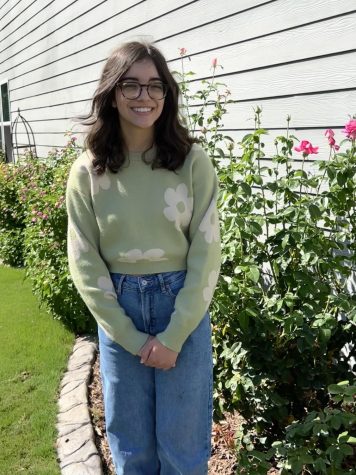Music’s influences in the world of fashion
November 28, 2022
The connection between music and fashion has emerged as history and human culture have evolved. More often than not, the music and tunes human beings have listened to have impacted the way they present themselves to the ever-changing world.
“Who you listen to can really translate to your whole vibe and who you are as a person, which also translates to your style,” sophomore Ashlynne Irali said.
Although music’s relationship with fashion has been expressed throughout human history, decades in the last century have produced a multitude of styles. For example, in the 40s and 50s, due to the influences of Frank Sinatra and Elvis Presley, ankle socks, as well as colorfully-sequined jumpsuits, were brought into society’s fashion.
Later, in the 80s, musicians such as Madonna, Prince, and Michael Jackson popularized the looks of corsets, fedoras, sparkly clothes, high heels, and giant hair-bows for society. Not only did these decades of musician-inspired fashion impact the audiences of their time, but they also paved the way for musicians and individuals in years to come.
“A lot of things have just come back from especially the 90s. Like with rock, [people today] have leather pants again, which, you know, that was a thing that [musicians wore] a while ago, and [those pants] are coming back,” junior Emily Bernier said. “[Corset tops too] are such a strange piece of fashion that has years of history that [people today] have changed, and now they can just be worn on like a random Wednesday.”
Additional styles returning from what they were before have impacted the styles of modern days. The styles and colorful outfits of hippies, who wore bell-bottom jeans, crocheted sweaters, and bright-based outfits in the late 60s and early 70s, and who also adored musicians and bands such as Bob Dylan and The Beatles, have transitioned to the styles of musicians today.
“[Today’s fashion] is mainly like accessorizing, and [fashion today is] also just like louder. So, if you’ve seen like Harry Styles [and his clothes], all of his concert outfits are bright and colorful and loud. And so then that translates to a lot of his fans’ outfits and then just also the media,” Irali said. “He has so many fans that other people are going to be influenced by [Styles himself].”
The impact felt from the work of Harry Styles and other popular artists can improve the emotional state of their listeners. According to the nonprofit Save The Music Foundation, “The sociological effects of music can include the improvement of people’s well-being due to chemical reactions in the brain, such as an increase in oxytocin.” This oxytocin boost within people’s brains can change how people want to embody their style.
“[Lana Del Ray] influences me and my fashion a lot because of how she dresses and how her songs are like melodic and so graceful. Like I want my style to embody her music as well. So, I think people look up to their artists, or their favorite artists, so [people] want to look like them,” sophomore Esther Aranha said.
From these desires to represent people’s favorite artists, certain clothes favored artists wear commonly cause spikes in clothing sales and searches. For example, according to Vox, “A group like BTS can inspire both men and women to dress like them. When rapper Suga from the group wore a checked shirt designed by Virgil Abloh, searches for it increased 120 percent, according to Lyst. The same occurred when RM, another BTS rapper, wore a pink Adidas number; searches for pink T-shirts rose by 97 percent.”
Similarly, clothing items debuted in music videos result in purchasing spikes. According to Internet Retailing, “42% [of young people] have been inspired by an artist or music video to buy a particular item of clothing, while 57% feel that music videos have impacted culture through changing fashion trends.” Not only can certain artists inspire their listeners and fans to dress similarly to them, but certain artists can inspire their audience to discover their own favored fashion looks.
“First and foremost, [the musicians I listen to] inspire me to dress comfortably. Not just like whatever I like, but whatever feels nice, especially because when you listen to different artists, they all have different styles, and that really makes you feel like you can find your own style and be unique,” Bernier said.
With these differences in decades, music tastes, and musicians, fashion tastes can inspire audiences to find their own style.
“Go do whatever you want to do [and listen and dress however you want]. Like, people are going to judge you either way, so just do what you want to do and do what makes you feel happiest,” Aranha said.


